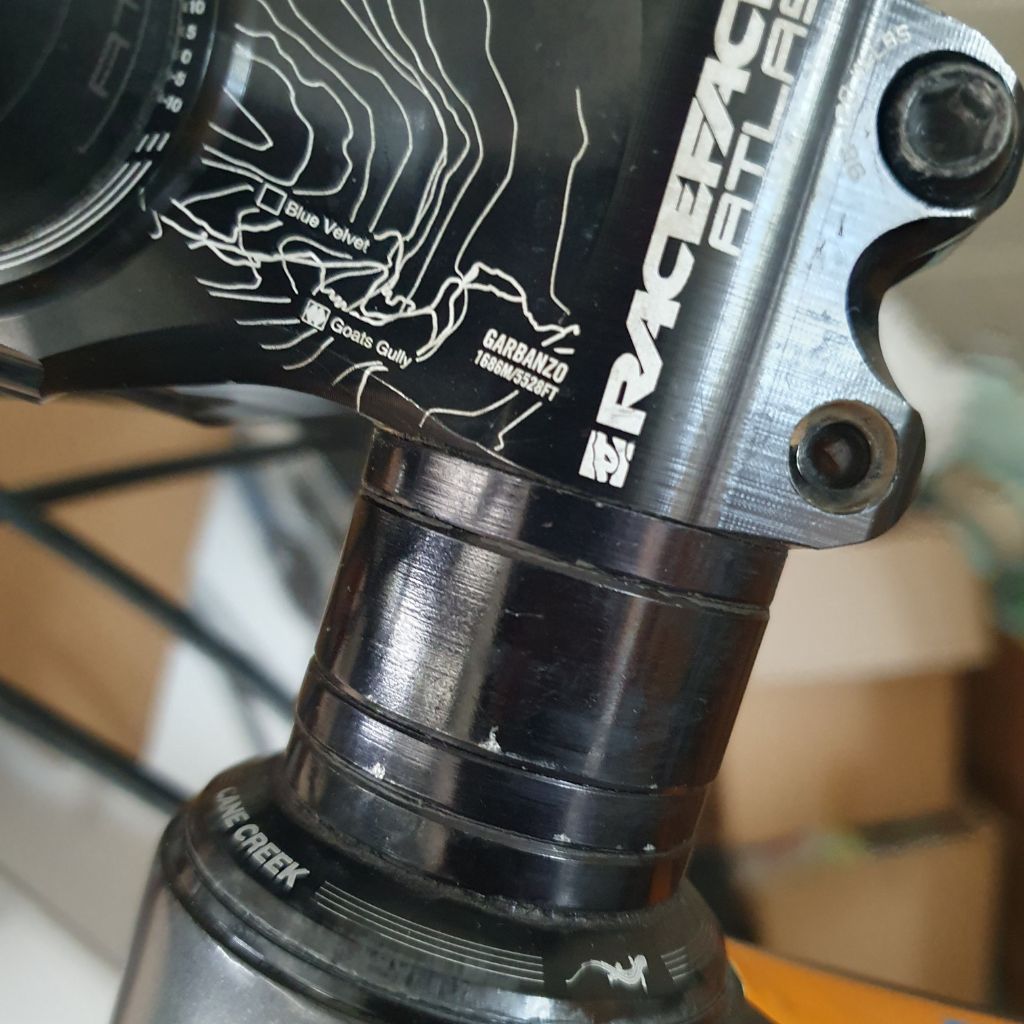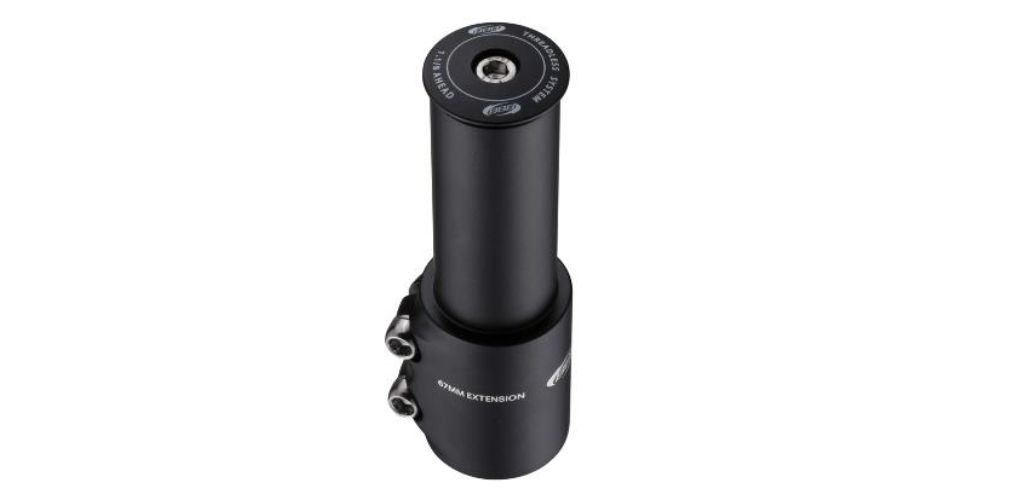While stem risers can safely be used for many casual on-road biking disciplines, and light off-road riding, they are definitely not regarded as being safe for serious mountain biking.
Why shouldn’t stem risers be used for mountain biking?
There are two main reasons for this:
- Firstly that the geometry of a mountain bike, and the riders body position, is the way it is for a reason, allowing predictable and precise control of a fast moving mountain bike over rough terrain. This involves many factors, including weight distribution, and as directly as possible connecting our movement of the bars to precise direction change. Dramatically changing this with a stem height extender is not likely to result in a good outcome.
- Secondly that the forces involved in mountain biking are significant, and the fork, mountain bike specific stem and handlebar, and other front-end components are designed and built with this in mind. Introducing other light-weight casual bicycle consumer components like a stem riser into a mountain bike build, especially those which profoundly change the riders position on the bike, and the torque / steering behavior, can cause all sorts of problems with the dependability and safety of the front end of the mountain bike, as well as the ability to steer the bike predictably while riding a trail.
Why would we want to use a stem riser anyway?
A stem riser extends the height of the bikes stem, bringing the handlebars up and closer to the rider. This essentially results in the rider being in a more upright riding position on the bike.
Some riders find they don’t like the usual body position while mountain biking, finding it gives them back pain or something similar – and therefore they’re wanting to be more upright on the mountain bike.
How can we raise our handlebars without a stem riser?
So, if we’re wanting to raise the bars on our mountain bike as much as possible, but don’t want to use a stem riser for all the reasons we’ve gone over, what can we do?
The first option is to check if we have any spacers above the stem, that we can move down underneath the stem. This relatively small change can make quite a difference in how our mountain bike handles.

If your stem is already placed as high as it can go safely on your steerer tube, with only the top cap fitted above it, then we need to look for other options…
The main choice we have left is to swap our handlebar with a high rise MTB handlebar. This riser bar will mean that our grip height is a bit higher, but without too dramatically altering the handling of the bike in a negative way – and also, crucially, not in a way that makes the bike unsafe for mountain biking!
We also have a further option available to us, to swap out our stem with a shorter stem if the stem you’re using is on the longer side. This will put you in a slightly more upright position on the bike.
A final additional choice is to install a mountain bike specific stem that has a raised angle, which are designed to run the handle bar a little higher than a neutral MTB stem, which just positions the bar at the same height as the point of attachment to the steerer tube.
I hope this has been of help to you! See you out shredding the trail!

